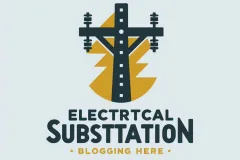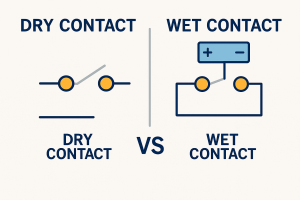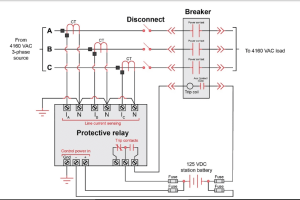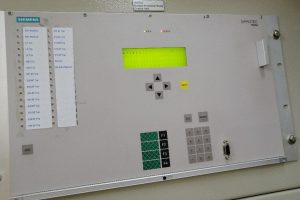Electrical commissioning is a critical step in ensuring the safety, functionality, and reliability of electrical systems in any facility. This process involves a series of methodical activities aimed at verifying that all components operate as intended before they are brought online. Below, we present a detailed guide to the key steps involved in the electrical commissioning process.
1. Pre-Commissioning Activities
1.1 Documentation Review
Before any physical inspection or testing begins, a thorough review of all relevant documentation is essential:
-
Verify all electrical drawings and specifications.
-
Review manufacturer installation manuals.
-
Check permits and regulatory compliance documents.
-
Confirm test certificates for major equipment.
-
Examine system single-line diagrams to ensure clarity and accuracy.
1.2 Visual Inspection
Inspecting the physical installation ensures that the system aligns with approved designs:
-
Verify the installation matches approved drawings.
-
Check cable routing and support systems.
-
Inspect equipment mounting and anchoring.
-
Ensure proper labeling of all components.
-
Check ventilation and cooling systems for adequacy.
-
Inspect fire barriers and seals for compliance.
1.3 Safety Preparations
Establishing safety protocols is crucial to protect personnel and equipment:
-
Implement lockout/tagout procedures.
-
Verify PPE requirements are met.
-
Post warning signs and establish barriers around work areas.
-
Review emergency procedures with the team.
-
Ensure first aid equipment is readily accessible.
2. Testing and Verification
2.1 Insulation Resistance Testing
This test ensures the integrity of insulation across system components:
-
Verify test equipment calibration.
-
Measure and record insulation resistance for:
-
Power cables
-
Control cables
-
Motors and generators
-
Transformers
-
-
Compare results against manufacturer specifications.
2.2 Continuity Testing
Confirm electrical continuity throughout the system:
-
Test all power circuits.
-
Verify control circuit connections.
-
Check grounding system continuity.
-
Document all measurements for future reference.
2.3 Voltage Testing
Voltage tests confirm proper power supply and distribution:
-
Check incoming supply voltage.
-
Verify phase sequence.
-
Measure voltage drops.
-
Test control voltage levels for consistency.
2.4 Protection Systems
Testing protection systems ensures the safety and reliability of the electrical installation:
-
Test circuit breaker operation.
-
Verify relay settings and operation.
-
Check fuse ratings for accuracy.
-
Test emergency shutdown systems.
-
Verify interlocking systems.
3. Functional Testing
3.1 No-Load Testing
Ensure components operate correctly without load:
-
Energize equipment sequentially.
-
Check motor rotation direction.
-
Verify control system functionality.
-
Test monitoring systems for accuracy.
-
Check alarm functions.
3.2 Load Testing
Gradual application of load confirms system performance:
-
Apply load incrementally.
-
Monitor:
-
Current readings
-
Voltage stability
-
Temperature increases
-
Vibration levels
-
-
Verify performance under various load conditions.
3.3 System Integration
Test the seamless operation of interconnected systems:
-
Verify interfaces with other systems.
-
Test building management system integration.
-
Check remote monitoring capabilities.
-
Test backup power systems for reliability.
4. Documentation and Handover
4.1 Test Reports
Comprehensive documentation is crucial for transparency and future maintenance:
-
Compile all test results.
-
Document any deviations or anomalies.
-
Include photographic evidence of installations and tests.
-
Prepare non-conformance reports as needed.
-
Generate final inspection certificates.
4.2 Training
Ensure operators and maintenance teams are well-prepared:
-
Conduct operator training sessions.
-
Review maintenance procedures in detail.
-
Explain emergency protocols clearly.
-
Provide all relevant system documentation.
4.3 Final Documentation
Organize and present the final set of documents for handover:
-
As-built drawings
-
Test certificates
-
Equipment settings records
-
Maintenance schedules
-
Warranty certificates
-
Emergency contact information
5. Quality Control Checklist
The quality control checklist serves as a final verification step to ensure that every aspect of the commissioning process has been completed correctly. This checklist helps to confirm the readiness of the electrical system for safe and efficient operation. Key points in the checklist include:
-
Documentation Review: Confirm all documents have been reviewed and approved, including system designs, permits, and compliance records.
-
Visual Inspections: Verify that all components are installed correctly and match the approved designs, with no visible defects or issues.
-
Safety Measures: Ensure all safety protocols, including lockout/tagout and PPE requirements, have been implemented.
-
Insulation Resistance Tests: Check that insulation resistance measurements meet the specified standards.
-
Continuity Tests: Verify the electrical continuity of power and control circuits, as well as the grounding system.
-
Voltage Measurements: Confirm all voltage readings are within acceptable ranges and properly documented.
-
Protection Systems: Ensure all protection devices, such as circuit breakers and relays, are tested and functioning as intended.
-
No-Load Tests: Confirm that equipment operates correctly without load, including motor rotation, control systems, and monitoring functions.





3 Comments
nztjrujvqzrwmzuhsshjhrtdqmlxtz
[…] example: CT Ratio: […]
muy buen articulo